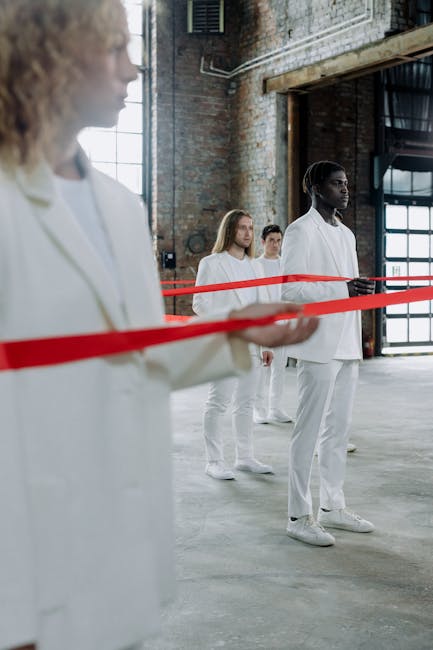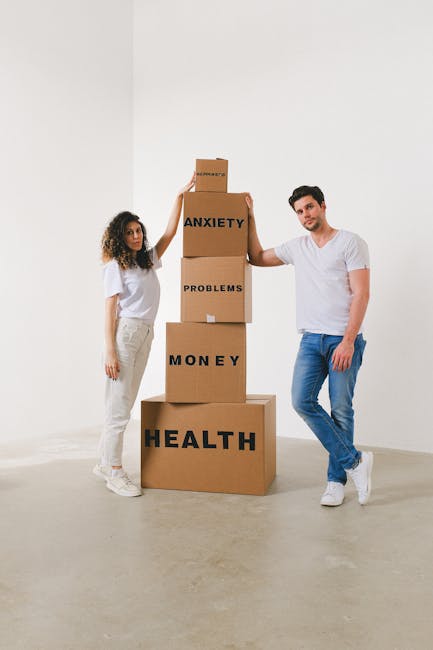How To Practice Patience In Your Relationship?
Patience is the glue that holds relationships together when things get tough. It’s the quiet strength that helps you navigate misunderstandings, unmet expectations, and life’s curveballs without losing your cool. But let’s be honest—practicing patience isn’t always easy. If you’ve ever found yourself snapping at your partner over something trivial or feeling frustrated when things don’t go your way, you’re not alone. The good news? Patience is a skill, and like any skill, it can be learned and improved. Stick around, and we’ll explore how to cultivate this essential quality to build a stronger, more loving relationship.
Key Takeaways
- Patience is essential for building trust, understanding, and emotional connection in relationships.
- Start by practicing patience with yourself before extending it to your partner.
- Empathy, effective communication, and mindfulness are key strategies for cultivating patience.
- Small, everyday habits can make a big difference in developing patience over time.
- Patience strengthens your character and enhances personal and relational growth.
Understanding the Importance of Patience in Relationships
Why patience is a cornerstone of healthy relationships
Patience is the foundation of any thriving relationship. It allows you to give your partner the time and space they need to grow, make mistakes, and be themselves. Without patience, even minor disagreements can escalate into major conflicts. Think of patience as the oil that keeps the gears of your relationship running smoothly—it reduces friction and helps everything work in harmony.
The impact of impatience on emotional connection
Impatience can create emotional distance between you and your partner. When you’re quick to anger or frustration, it sends the message that their feelings or efforts aren’t valued. Over time, this can erode trust and intimacy. On the flip side, patience fosters a sense of safety and acceptance, which are crucial for a deep emotional bond.
How patience fosters trust and understanding
When you’re patient, you show your partner that you’re willing to listen, understand, and support them, even when things aren’t perfect. This builds trust and encourages open communication. It’s like planting a seed—patience is the water and sunlight that help your relationship grow into something beautiful and lasting.

Practicing Patience with Yourself First
Recognizing your own limitations
Before you can be patient with your partner, you need to be patient with yourself. Acknowledge that you’re human and bound to make mistakes. Start small—if you lose your temper, don’t beat yourself up. Instead, reflect on what triggered your impatience and how you can handle it better next time.
Start practicing patience with yourself first
Set realistic expectations for your personal growth. For example, if you’re working on being less reactive, celebrate small wins like pausing before responding in a heated moment.
Benchmark your patience-developing skills
Keep track of your progress. Journaling or simply reflecting on your day can help you identify patterns and areas for improvement.
Building self-awareness and emotional control
Self-awareness is the first step toward emotional control. Pay attention to your triggers and how they affect your reactions. Are you more impatient when you’re tired or stressed? Once you identify these patterns, you can take proactive steps to manage them.
Developing a growth mindset
Adopt the mindset that patience is a journey, not a destination. Every challenge is an opportunity to practice and grow. Remember, even the most patient people had to start somewhere.

Strategies to Cultivate Patience with Your Partner
Practicing empathy
Empathy is the secret sauce of patience. When you understand where your partner is coming from, it’s easier to be patient with them.
Recognize that your partner is beautifully human, with all that entails
Your partner isn’t perfect, and neither are you. Embrace their quirks and imperfections as part of what makes them unique.
Put yourself in their shoes
Ask yourself, “How would I feel if I were in their position?” This simple shift in perspective can work wonders for your patience.
Listening skillfully
Good listening is an underrated superpower in relationships.
Avoid interrupting and focus on understanding
When your partner is speaking, resist the urge to jump in with your thoughts. Instead, focus on truly understanding what they’re saying.
Validate their feelings and perspectives
Even if you don’t agree, let your partner know that their feelings are valid. A simple “I understand why you feel that way” can go a long way.
Communicating effectively
Clear communication is the backbone of patience.
Set realistic expectations
Discuss your needs and expectations openly. This reduces misunderstandings and helps both of you stay on the same page.
Communicate, communicate, communicate
When in doubt, talk it out. Open, honest communication can prevent small issues from snowballing into bigger problems.

Practical Tips for Everyday Patience
Counting to three before reacting
Always count to three
When you feel frustration bubbling up, pause and count to three. This simple trick can help you respond thoughtfully instead of reacting impulsively.
Take a deep breath to calm emotions
Deep breathing activates your body’s relaxation response, making it easier to stay calm and patient.
Managing distractions
Put away all screens for a set period of time
Distractions like phones and TVs can make it harder to be present with your partner. Set aside dedicated screen-free time to focus on each other.
Be fully present in the moment
Whether you’re having a conversation or sharing a meal, give your partner your undivided attention.
Carving out quality time together
Prioritize meaningful activities
Engage in activities that strengthen your bond, like cooking together or going for a walk.
Create rituals to strengthen your bond
Simple rituals, like a weekly date night or morning coffee together, can help you stay connected.

Long-Term Benefits of Patience in Relationships
Observing the benefits of patience
Improved emotional resilience
Patience helps you stay calm and composed, even in challenging situations.
Deeper connection and intimacy
When you’re patient, your partner feels valued and understood, which deepens your emotional bond.
Building a stronger foundation for the future
Patience lays the groundwork for a stable, lasting relationship. It’s like building a house—you need a strong foundation to weather life’s storms.
Enhancing personal and relational growth
Practicing patience not only improves your relationship but also helps you grow as an individual.

Overcoming Common Challenges to Patience
Giving up the need to be right all the time
Sometimes, being right isn’t as important as being kind. Let go of the need to win every argument and focus on finding common ground.
Managing stress and external pressures
Stress can make patience harder to practice. Find healthy ways to manage stress, like exercise or meditation.
Learning from setbacks and mistakes
Every mistake is a learning opportunity. If you lose your patience, reflect on what went wrong and how you can do better next time.
Building a Lifestyle That Supports Patience
Keeping a fit mind and body
Practice mindfulness and meditation
Mindfulness can help you stay present and calm, making it easier to practice patience.
Engage in regular physical activity
Exercise reduces stress and improves mood, which can make you more patient.
Creating a supportive environment
Surround yourself with positive influences
Spend time with people who inspire you to be your best self.
Limit exposure to negativity
Cut back on activities or relationships that drain your energy or make you feel impatient.

Character-Building Through Patience
How patience strengthens your character
Patience teaches you resilience, empathy, and self-control—qualities that benefit every area of your life.
The ripple effect of patience on other areas of life
When you practice patience in your relationship, it spills over into your work, friendships, and personal growth.
Inspiring patience in your partner and others
Your patience can inspire your partner to be more patient too, creating a positive cycle that strengthens your relationship.
For more insights on building healthy relationships, check out this guide (source).
Patience isn’t just a virtue—it’s a superpower for your relationship. By practicing empathy, improving communication, and staying present, you can cultivate patience and create a stronger, more loving bond with your partner. And remember, it’s okay to take it one step at a time. After all, patience itself is a journey worth taking.
For more tips on emotional regulation and relationship dynamics, explore this article (source).
FAQ: Mastering the Art of Patience in Your Relationship – A Gentle Guide to Understanding and Growth
Why is patience important in a relationship?
Patience fosters understanding, reduces conflicts, and creates a safe space for both partners to grow. It helps in building trust and emotional intimacy, which are essential for a healthy relationship.
How can I practice patience when my partner frustrates me?
Take a moment to pause and breathe before reacting. Reflect on the situation and try to understand your partner’s perspective. Communication is key—express your feelings calmly and listen to theirs as well.
What are some daily habits to cultivate patience in a relationship?
Practice active listening, show empathy, and focus on gratitude. Engage in mindfulness exercises like meditation or journaling to manage your emotions effectively. Small acts of kindness can also nurture patience over time.
How can I stay patient during disagreements or arguments?
Focus on the issue, not the person. Avoid interrupting and give your partner the time to express themselves. Take breaks if needed to cool down and revisit the conversation with a clear mind.
What role does self-awareness play in practicing patience?
Self-awareness helps you recognize your triggers and emotional responses. By understanding your own behavior, you can better manage your reactions and approach situations with a calm and patient mindset.
How can I encourage my partner to be more patient as well?
Lead by example—demonstrate patience in your actions and communication. Share your feelings and discuss the importance of patience in your relationship. Encourage open dialogue and mutual growth.
What should I do if I feel my patience is running out?
Take a step back and give yourself time to recharge. Engage in activities that help you relax, such as exercise or hobbies. Reflect on the positive aspects of your relationship to regain perspective.
Can practicing patience improve other aspects of my life?
Absolutely! Patience enhances your emotional resilience, improves communication skills, and helps you handle stress more effectively. These benefits extend beyond your relationship to other areas of your life.
How do cultural or personal differences affect patience in a relationship?
Cultural and personal differences can create misunderstandings, but patience allows you to appreciate and respect these differences. It encourages open-mindedness and helps you find common ground.
Is it possible to practice too much patience in a relationship?
Yes, excessive patience can lead to suppressing your own needs or tolerating unhealthy behavior. It’s important to balance patience with setting boundaries and addressing issues constructively.



